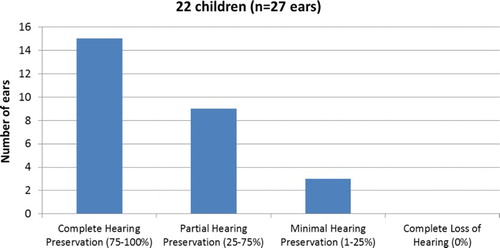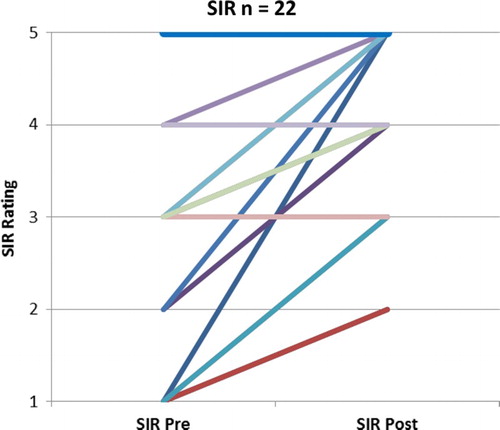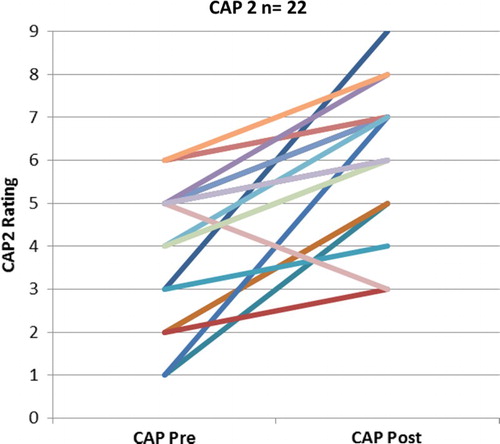Figures & data
Figure 1 Hearing preservation outcomes calculated using the method recommended by CitationSkarzynski et al. (2013). Fifty-six percentage of ears had complete preservation of hearing, 33% had partial preservation, 11% had minimal perseveration, and 0% had complete loss of hearing

Figure 2 CAP2 scores pre versus post-implant. The post-implant scores are the most recent rating taken and ranges from 6 months to 7 years post-implant. A low score represents poorer performance. Category 1, the lowest pre-implant score in our cohort, means that the child is aware of environmental sounds only. Category 9, the highest possible score, means that the child is able to use the telephone with an unknown speaker in an unpredictable context

Figure 3 SIR scores pre versus post-implant. The post-implant scores are the most recent rating taken and ranges from 6 months to 7 years post-implant. A low score represents poorer performance. Category 1 means the child has no intelligible speech or recognizable words, but they may be capable of verbalization. Category 5 means the child's connected speech is intelligible with little or no concentration on the part of the listener. The child is understood easily in interaction with an adult

